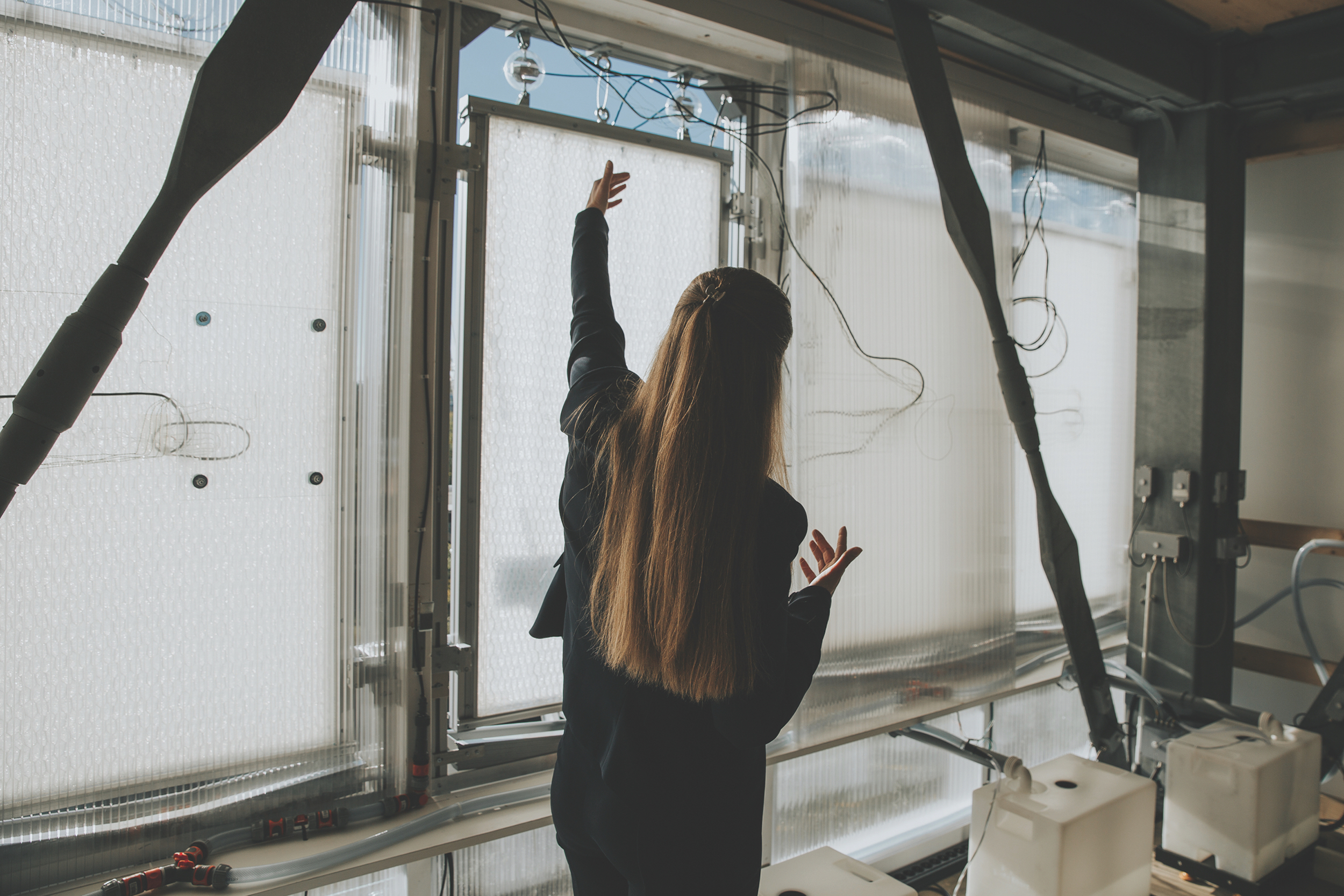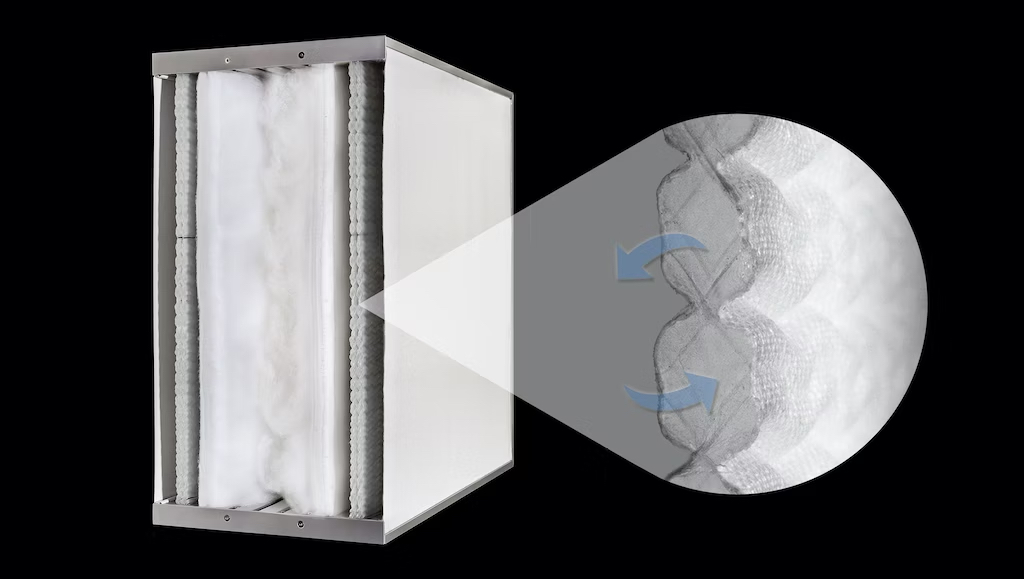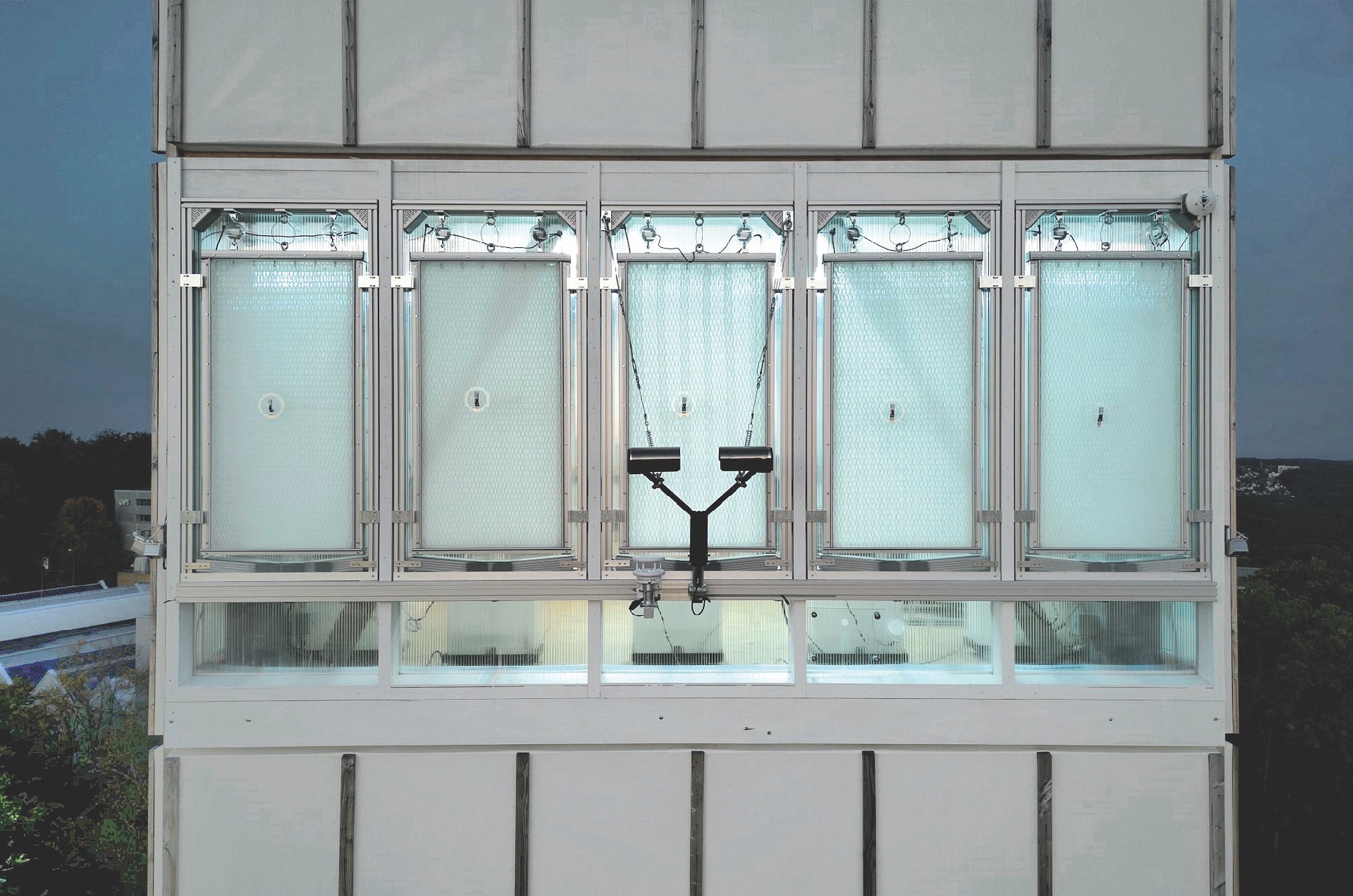Global urbanization and densification are giving rise to new thinking about how design can lower the impact of buildings on the heating of the planet. This is particularly true of high-rise buildings with glass façades that get scalding hot and generate heat islands. On buildings and other sealed surfaces, only about 10% of any rainwater that hits them evaporates; the rest of that precipitation typically ends up running into sewer systems in volumes that increasingly are leading to flooding.
One design and engineering solution to these problems is being explored at the University of Stuttgart in Germany, where researchers last October presented what they claim is the first hydroactive façade that moderates the temperature of exterior walls and interiors of buildings by absorbing rainwater that the system releases on hot days for evaporative cooling.
“It’s a milestone in the adaptation of the built environment to the urgent challenges of our time,” proclaims Christina Eisenbarth, a Research Assistant at the university’s Institute of Lightweight Structures and Conceptual Design (ILEK), and the façade’s inventor.
Dubbed HydroSKIN, the façade consists of an external, multilayered 3D textile that acts as a water collector and evaporator. Here’s how it works, according to research abstracts that ILEK released last fall:
- Its first layer is a water-permeable mesh or knitted fabric facing the outside that lets water in and filters out impurities and insects.
- A second inner layer is a water-transporting spacer fabric whose pile threads mobilize incoming and outgoing water and provide an open porous structure with a large surface area for air circulation and facilitating evaporation.
- A third layer can be integrated into the system to optimize water storage and evaporation performance. A water-bearing fourth layer, which might be a foil, is on the inside and provides water drainage and collection.

The layers are assembled by a force fit and are fixed into a frame profile by means of a waterproof Keder fabric.
The thickness of the textile- and film-based envelope system can vary between 20 and 60 mm, depending on environmental conditions and performance requirements. Depending on wind-driven rain yields, the depth of the frame profile’s water supply and discharge conduits might range from 50 to 100 mm.
HydroSKIN is well suited for high-rise buildings
Researchers have tested their concept in the lab and on buildings in Stuttgart and Singapore. At press time Eisenbarth was in Australia preparing to test HydroSKIN on buildings in Sydney.
The findings so far support the efficiency of the façade and its potential for high-rise buildings. For example, research found that above building heights of 29 meters, the total square-meter-related wind-driven-rain (WDR) yields striking a façade surface exceeded vertically falling precipitation yields per square meter. In other words, more rain can be absorbed by the façade than by a roof surface of the same size, and this disparity becomes even more pronounced at higher elevations.
In lab tests, researchers demonstrated a temperature reduction of about 10 degrees due to the effects of evaporation via HydroSKIN. Initial measurements last September on the world’s first adaptive high-rise building, at the University of Stuttgart’s Vaihingen campus, “suggest the cooling potential is even significantly higher,” says Eisenbarth.

Last year, a prototype installation and meteorological evaluation of five different HydroSKIN prototypes was conducted on the 10th level of this 12-floor, 36.5-meter campus high-rise. In 2023, there will be further testing of HydroSKIN on the building’s 9th level in combination with a unitized glass façade that will integrate textile insulation and other functional layers into the system.
BD+C was unable to ascertain how close HydroSKIN is to becoming commercially viable. (The results from the testing in Australia should be ready sometime this summer, says Dr. Walter Haase, ILEK’s Managing Director and Head of Working Groups.) But it is ILEK’s contention that this system could be retrofitted onto any façade surface of new or existing buildings.

For one thing, its mass—between one kilogram per square meter dry to five kg/sm saturated—compares favorably to other façade infill materials such as cellular concrete (~150 kg/sm), wood-panel construction (~125 kg/sm), thermal insulation composite systems (~63 kg/sm), or even triple glazing (~45 kg/sm). In addition, HydroSKIN is designed to be aesthetically unobtrusive, and its layers are framed in a profile that allows for easy disassembly and recycling of all components.
While HydroSKIN’s long-term suitability has yet to be proven, ILEK has manufacturers lined up to make it, says Eisenbarth.
Related Stories
| Feb 1, 2012
Replacement windows eliminate weak link in the building envelope
Replacement or retrofit can help keep energy costs from going out the window.
| Jan 31, 2012
28th Annual Reconstruction Awards: Modern day reconstruction plays out
A savvy Building Team reconstructs a Boston landmark into a multiuse masterpiece for Suffolk University.
| Jan 3, 2012
New Chicago hospital prepared for pandemic, CBR terror threat
At a cost of $654 million, the 14-story, 830,000-sf medical center, designed by a Perkins+Will team led by design principal Ralph Johnson, FAIA, LEED AP, is distinguished in its ability to handle disasters.
| Jan 3, 2012
BIM: not just for new buildings
Ohio State University Medical Center is converting 55 Medical Center buildings from AutoCAD to BIM to improve quality and speed of decision making related to facility use, renovations, maintenance, and more.
| Jan 3, 2012
New SJI Rule on Steel Joists
A new rule from the Steel Joist Institute clarifies when local reinforcement of joists is required for chord loads away from panel points. SJI members offer guidance about how and when to specify loads.
| Jan 3, 2012
Rental Renaissance, The Rebirth of the Apartment Market
Across much of the U.S., apartment rents are rising, vacancy rates are falling. In just about every major urban area, new multifamily rental projects and major renovations are coming online. It may be too soon to pronounce the rental market fully recovered, but the trend is promising.
| Dec 20, 2011
BCA’s Best Practices in New Construction available online
This publicly available document is applicable to most building types and distills the long list of guidelines, and longer list of tasks, into easy-to-navigate activities that represent the ideal commissioning process.
| Dec 16, 2011
Goody Clancy-designed Informatics Building dedicated at Northern Kentucky University
The sustainable building solution, built for approximately $255-sf, features innovative materials and intelligent building systems that align with the mission of integration and collaboration.
| Dec 10, 2011
Energy performance starts at the building envelope
Rainscreen system installed at the west building expansion of the University of Arizona’s Meinel Optical Sciences Center in Tucson, with its folded glass wall and copper-paneled, breathable cladding over precast concrete.
| Dec 10, 2011
Turning Balconies Outside In
Operable glass balcony glazing systems provide solution to increase usable space in residential and commercial structures.
















